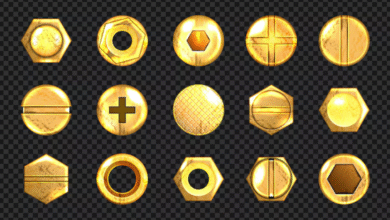Cyber Chef: The Ultimate Guide to Mastering Data Manipulation

Have you ever found yourself staring at a jumbled mess of data, wondering how to make sense of it? Maybe it’s a cryptic string you need to decode, a file you want to compress, or some sensitive information that needs encrypting. If you’ve been there, you’re not alone and thankfully, there’s a tool that can make your life a whole lot easier. Enter Cyber Chef, a web-based powerhouse that’s been dubbed the “Cyber Swiss Army Knife” for its incredible versatility.
Developed by the UK’s Government Communications Headquarters (GCHQ), Cyber Chef is a free, open-source application that lets you manipulate data in ways you didn’t think were possible without writing code. Whether you’re a cybersecurity pro, a data analyst, or just someone who loves tinkering with information, this tool has something for you. In this guide, we’ll dive deep into what Cyber Chef is, how it works, and why it’s become a must-have for anyone dealing with data. Ready to unlock its potential? Let’s get started!
What is Cyber Chef?
Picture this: you’re handed a string of gibberish that’s supposedly important, but it’s encoded in Base64. Or maybe you’ve got a JSON file that’s all squished together and impossible to read. Cyber Chef is the tool that steps in to save the day. It’s a web application designed to perform a dizzying array of data manipulation tasks think encoding, decoding, encryption, decryption, compression, parsing, and more all from the comfort of your browser.
Originally built by GCHQ to help cybersecurity experts tackle challenges like malware analysis and threat investigation, Cyber Chef has grown into a go-to resource for anyone who works with data. And the best part? You don’t need to be a coding wizard to use it. Its drag-and-drop interface lets you stack operations like building blocks, transforming your input into exactly what you need in real-time.
So, what’s the big deal? Cyber Chef is:
-
Open-source: Free for anyone to use or modify.
-
Client-side: Runs entirely in your browser, no server uploads required.
-
Versatile: Offers over 300 operations to cover almost any data task you can imagine.
Whether you’re cleaning up messy text, securing sensitive info, or just playing around with data for fun, Cyber Chef has your back.
Key Features of Cyber Chef
What makes Cyber Chef so special? It’s all about the features. Let’s break down the heavy hitters that set it apart from other tools.
1. A Massive Library of Operations
Cyber Chef boasts over 300 operations, organized into neat categories for easy access. Here’s a taste of what it can do:
-
Encoding/Decoding: Base64, URL, Hex, HTML entities you name it.
-
Encryption/Decryption: AES, DES, RSA, and other cryptographic goodies.
-
Compression: Gzip, Zip, Bzip2 for shrinking files.
-
Data Formatting: JSON, XML, CSV parsing and beautification.
-
Hashing: MD5, SHA-1, SHA-256 for integrity checks.
-
String Tools: Regular expressions, substring extraction, and more.
It’s like having a toolbox with every gadget you could ever need.
2. Real-Time Magic
Ever wish you could see your changes as you make them? With Cyber Chef, you can. As you drag operations into your recipe, the output updates instantly. No more guessing or trial-and-error marathons just immediate results.
3. Save and Share Recipes
Found the perfect sequence of operations? Save it as a “recipe” and reuse it later. You can even share it with a friend or colleague via a handy URL. It’s collaboration made simple.
4. Customizable Power
For the tech-savvy, Cyber Chef lets you write custom operations in JavaScript. If the built-in tools don’t cut it, you can tailor it to your exact needs.
5. Offline Capability
Since it’s client-side, you can download Cyber Chef and run it without an internet connection. Perfect for working with sensitive data on the go.
6. File-Friendly
While it’s best for smaller datasets, Cyber Chef can handle files up to a few megabytes. Upload your data, process it, and download the result all in one place.
Here’s a quick table to sum up some popular operations and their uses:
|
Category |
Examples |
Why You’d Use It |
|---|---|---|
|
Encoding/Decoding |
Base64, URL, Hex |
Prep data for storage or transfer |
|
Encryption |
AES, RSA |
Secure sensitive info |
|
Compression |
Gzip, Zip |
Reduce file size |
|
Data Formatting |
JSON Beautify, CSV |
Make data readable |
|
Hashing |
SHA-256, MD5 |
Verify data hasn’t been tampered with |
How to Use Cyber Chef: A Beginner’s Guide
New to Cyber Chef? Don’t worry it’s super easy to get started. Here’s a step-by-step walkthrough to turn you into a data manipulation pro in no time.
Step 1: Open Cyber Chef
Head to the official Cyber Chef site. No installation needed it runs right in your browser. Want to use it offline? Download the source from GitHub and open the HTML file locally.
Step 2: Add Your Data
On the left, you’ll see the “Input” box. Paste your text here, or click the upload button to load a file. This is your raw material think of it as clay waiting to be shaped.
Step 3: Build Your Recipe
On the right, the “Operations” panel lists all the tools at your disposal. Drag the ones you need into the “Recipe” area, stacking them in the order you want them applied. For example:
-
Need to decode Base64? Drag “From Base64.”
-
Want to pretty up some JSON? Add “JSON Beautify” next.
Step 4: Check the Output
The “Output” box at the bottom updates as you go. Tweak your recipe until the result looks just right. If something’s off, rearrange or remove operations it’s all trial and error, minus the frustration.
Step 5: Save Your Work
Happy with your recipe? Hit “Save” to generate a URL you can bookmark or share. It’s like saving a cheat code for your next data challenge.
Example 1: Decoding Base64
Let’s try something simple. Say you’ve got this Base64 string: SGVsbG8gQ3liZXIgQ2hlZg==.
-
Paste it into the Input box.
-
Drag “From Base64” into the recipe.
-
Boom the Output shows: Hello Cyber Chef.
Example 2: Formatting JSON
Got a messy JSON blob like {“name”:”Alice”,”age”:30}?
-
Input the text.
-
Add “JSON Beautify” to the recipe.
-
The Output becomes:
{ "name": "Alice", "age": 30 }
See how easy that was? You can chain as many operations as you like for more complex tasks.
Why Cyber Chef is a Game-Changer
So, why should you care about Cyber Chef? Let’s talk benefits because this tool has plenty.
1. No Coding Skills Needed
Forget wrestling with Python scripts or command-line tools. Cyber Chef’s interface is so intuitive, anyone can use it, from beginners to seasoned pros.
2. One Tool, Endless Possibilities
With hundreds of operations, it’s like having a dozen specialized tools rolled into one. Why juggle multiple apps when Cyber Chef does it all?
3. Speedy Workflow
Chaining operations saves you from hopping between programs. Decode, parse, and encrypt in one go your productivity will thank you.
4. Learn as You Go
Curious about how encryption works? Play with Cyber Chef’s operations and see the process in action. It’s hands-on learning at its best.
5. Free and Open
No subscription fees, no catch just a powerful tool you can use or tweak to your heart’s content.
Here’s a real-world scenario: Imagine you’re investigating a phishing email with an encoded payload. With Cyber Chef, you can decode it, extract key parts, and analyze it all in minutes. That’s the kind of efficiency that makes it a standout.
Limitations to Keep in Mind
No tool is perfect, and Cyber Chef has a few quirks worth noting:
1. Size Matters
It shines with smaller datasets (think kilobytes to a few megabytes). For massive files, you might hit performance snags or need to break them into chunks.
2. Browser-Based Limits
Since it runs in your browser, it’s tied to your device’s resources. A sluggish computer might slow things down.
3. Advanced Features Take Effort
Basic stuff is a breeze, but custom operations or regex-heavy tasks require some technical know-how. Beginners might need a bit of practice here.
Even with these caveats, Cyber Chef is still a top pick for most data tasks especially when speed and simplicity are key.
Cyber Chef vs. Other Tools: How It Stacks Up
Wondering how Cyber Chef compares to other players in the data manipulation game? Let’s put it head-to-head with some big names:
|
Tool |
Main Purpose |
Ease of Use |
Best For |
|---|---|---|---|
|
Cyber Chef |
General data manipulation |
Super easy |
Quick, all-purpose tasks |
|
Burp Suite |
Web security testing |
Moderate (setup-heavy) |
Web app pros |
|
Wireshark |
Network traffic analysis |
Steep learning curve |
Network troubleshooting |
|
OpenSSL |
Cryptographic operations |
Technical (CLI-based) |
Developers and admins |
Cyber Chef wins on accessibility and versatility. While Burp Suite digs deep into web vulnerabilities and Wireshark sniffs out network issues, Cyber Chf covers a broader range of everyday tasks without the complexity.
Advanced Tips to Level Up Your Cyber Chef Skills
Ready to go beyond the basics? Here are some tricks to make you a Cyber Chef master:
1. Chain Like a Pro
Stack operations creatively. Decode a string, parse it as JSON, extract a field, then encrypt it—all in one recipe. The possibilities are endless.
2. Master Regular Expressions
Use the “Regular Expression” operation to search, replace, or extract patterns. For example, grab all email addresses from a text block with a regex like \b[A-Za-z0-9._%+-]+@[A-Za-z0-9.-]+\.[A-Za-z]{2,}\b.
3. Go Custom
Write your own JavaScript operations for niche tasks. It’s a bit geeky, but it turns Cyber Chef into your personal playground.
4. Automate It
Save recipes for repetitive jobs, or explore scripting options to integrate Cyber Chef into bigger workflows.
Try this: Take a hex-encoded string, convert it to text, then hash it with SHA-256 all in one go. It’s a great way to flex your skills.
Community and Support: You’re Not Alone
Cyber Chf isn’t just a tool it’s a community. Here’s how to tap into it:
-
Documentation: The official wiki is packed with guides and operation details.
-
GitHub: Visit the repository to report bugs, suggest features, or contribute code.
-
Forums: Check Reddit or Stack Overflow for tips from fellow users.
Got a tricky recipe? Share it online someone’s bound to have a solution.
FAQ: Your Cyber Chef Questions Answered
Got questions? We’ve got answers tailored to what people are searching for.
What is Cyber Chef used for?
It’s a jack-of-all-trades for data tasks encoding, decoding, encryption, formatting, and more. Cybersecurity folks love it for analyzing threats, but it’s handy for anyone wrangling data.
How do I get started with Cyber Chef?
Visit gchq.github.io/CyberChef, paste your data, and start dragging operations. Tutorials on YouTube can help too!
Can Cyber Chef handle large files?
It’s best for files up to a few megabytes. Bigger stuff might slow it down split it up or try a heftier tool.
Is Cyber Chef good for beginners?
Absolutely! Its drag-and-drop setup is newbie-friendly, but it’s got depth for pros too. Start simple and grow from there.
How does Cyber Chef compare to other tools?
It’s broader and easier than niche tools like Burp Suite or Wireshark. Think of it as your all-purpose data sidekick.
Conclusion: Why You Should Try Cyber Chef
Cyber Chef is more than just a tool it’s a time-saver, a problem-solver, and a gateway to mastering data manipulation. With its vast operation library, user-friendly design, and zero-cost access, it’s hard to find a reason not to give it a spin. Whether you’re decoding a string for fun or tackling a cybersecurity challenge, Cyber Chef makes it fast, simple, and dare I say, enjoyable.
So, what are you waiting for? Pop over to Cyber Chef’s site and start playing around. You might just discover your new favorite tool and maybe even impress yourself with what you can do.



